-
In Sweden, replacing nuclear power with wind power does not make sense
The Swedish power supply is largely free of carbon emissions. Indeed, it is mainly based on a combination of hydroelectric and nuclear power combined with power exchange with neighboring Scandinavian countries. A new study, investigating the possibility of replacing nuclear power with wind power, which is by nature intermittent, concludes that a backup system, based on fossil fuel, namely gas, would be required in combination with wind power. In such a scenario, the CO2 emissions would double.
-
-
Appalachian coal ash rich in rare earth elements
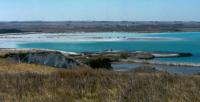
In the wake of a 2014 coal ash spill into North Carolina’s Dan River from a ruptured Duke Energy drainage pipe, the question of what to do with the nation’s aging retention ponds and future coal ash waste has been a highly contested topic. A study of the content of rare earth elements in U.S. coal ashes shows that coal mined from the Appalachian Mountains could be the proverbial golden goose for hard-to-find materials critical to clean energy and other emerging technologies.
-
-
Harnessing solar, wind energy in one device to power the Internet of Things
The “Internet of Things” could make cities “smarter” by connecting an extensive network of tiny communications devices to make life more efficient. But all these machines will require a lot of energy. Rather than adding to the global reliance on fossil fuels to power the network, researchers say they have a new solution.
-
-
Update on earthquakes: Newest results from Oklahoma Commission look “encouraging”
The Oklahoma Corporation Commission (OCC), the regulatory agency overseeing the state’s oil and gas industry, now has data that may suggest their directives to owners of production and induction wells have successfully contributed to a decline in seismic activity in the most volatile areas prone to earthquakes.Scientists at the Oklahoma Geological Survey (OGS) continue to remind the public that there are a wide variety of unanswered questions about immediate and long-term remedies even with the new directives in place.
-
-
Humans have been causing earthquakes in Texas since the 1920s: Study
Earthquakes triggered by human activity have been happening in Texas since at least 1925, and they have been widespread throughout the state ever since, according to a new historical review of the evidence. The earthquakes are caused by oil and gas operations, but the specific production techniques behind these quakes have differed over the decades.
-
-
Growing demand for bioenergy threatens global food supply

As countries around the world look for ways to reduce their use of fossil fuels, the growing demand for bioenergy runs the risk of threatening the global food supply. Researchers have developed a certification scheme for biomass resources designed to incorporate food security, to help ensure people in affected regions of the world can continue to put food on their tables.
-
-
Fracking would pose no danger to water supplies: Research
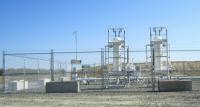
One of the primary concerns of those who oppose the development of shale gas by hydraulic fracturing is that creation of new fractures in the earth could cause fracking fluids to leak into, and contaminate, underground freshwater aquifers. Potential future fracking activity in the United Kingdom is unlikely to pose a pollution danger to overlying aquifers, new research from a leading academic suggests.
-
-
Groundwater quality changes alongside the expansion of hydraulic fracturing and horizontal drilling
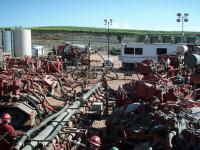
New research demonstrates that groundwater quality changes alongside the expansion of horizontal drilling and hydraulic fracturing but also suggests that some potentially hazardous effects may dissipate over time. The research is the first to analyze groundwater quality in the Cline Shale region of West Texas before, during, and after the expansion of hydraulic fracturing and horizontal drilling.
-
-
A single oil field a key culprit in global ethane gas increase
A single U.S. shale oil field is responsible for much of the past decade’s increase in global atmospheric levels of ethane, a gas that can damage air quality and impact climate, according to a new study. The researchers found that the Bakken Formation, an oil and gas field in North Dakota and Montana, is emitting roughly 2 percent of the globe’s ethane. This is about 250,000 tons per year.
-
-
Fossil fuels could be phased out worldwide in a decade: Study
The worldwide reliance on burning fossil fuels to create energy could be phased out in a decade, according to energy experts. The experts analyzed energy transitions throughout history, and argue that only looking toward the past can often paint an overly bleak and unnecessary picture. The transition from wood to coal in Europe, for example, took between 96 and 160 years, whereas electricity took 47 to 69 years to enter into mainstream use. The future could be different: the scarcity of resources, the threat of climate change, and vastly improved technological learning and innovation could greatly accelerate a global shift to a cleaner energy future.
-
-
Texas earthquake may have been manmade, but more data needed to assess hazards
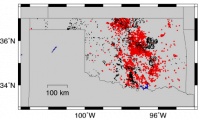
The most comprehensive analysis to date of a series of earthquakes that included a 4.8 magnitude event in East Texas in 2012 has found it plausible that the earthquakes were caused by wastewater injection. The findings also underscore the difficulty of conclusively tying specific earthquakes to human activity using currently available subsurface data.
-
-
Oil, gas wastewater disposal pollutes surface water, harm waterways

Unconventional oil and gas (UOG) operations combine directional drilling and hydraulic fracturing, or “fracking,” to release natural gas and oil from underground rock. This process results in in water pollution which may increase endocrine disrupting chemicals (EDCs) in surface and ground water, exposing populations living near these operations to increased risk of disease. High levels of EDC activity were found in the surface water near a hydraulic fracturing wastewater disposal facility in West Virginia. Approximately 36,000 of these disposal wells are currently in operation across the United States.
-
-
Renewables and nuclear no substitute for carbon dioxide disposal
Oxford scientist argues that there are only two things we can affect with policies today that will really matter for peak warming: reducing the cost of large-scale capture and disposal of carbon dioxide, and maximizing the average rate of economic growth we achieve for a given rate of emission in the meantime.
-
-
Fracking linked to most induced earthquakes in western Canada
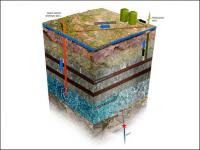
A survey of a major oil and natural gas-producing region in Western Canada suggests a link between hydraulic fracturing or “fracking” and induced earthquakes in the region. The study’s findings differ from those reported from oil and gas fields in the central United States, where fracking is not considered to be the main cause of a sharp rise in induced seismicity in the region. Instead, the proliferation of hundreds of small earthquakes in that part of the United States is thought to be caused primarily by massive amounts of wastewater injected back into the ground after oil and gas recovery.
-
-
Fukushima five years on: Three lessons from the disaster

It has been five years since the emergency sirens sounded at Japan’s Fukushima Daiichi power plant following the massive 2011 earthquake and subsequent devastating tsunami. The partial meltdown of three reactors caused approximately 170,000 refugees to be displaced from their homes, and radiation releases and public outcry forced the Japanese government to temporarily shut down all of their nuclear power plants. On the fifth anniversary of the partial meltdown at Japan’s Fukushima Daiichi Power Plant, Stanford’s Rodney Ewing says we should rethink our language, reassess natural disaster risks, and appreciate the links between nuclear energy and renewables.
-
More headlines
The long view
Trump Is Fast-Tracking New Coal Mines — Even When They Don’t Make Economic Sense
In Appalachian Tennessee, mines shut down and couldn’t pay their debts. Now a new one is opening under the guise of an “energy emergency.”
Smaller Nuclear Reactors Spark Renewed Interest in a Once-Shunned Energy Source
In the past two years, half the states have taken action to promote nuclear power, from creating nuclear task forces to integrating nuclear into long-term energy plans.
